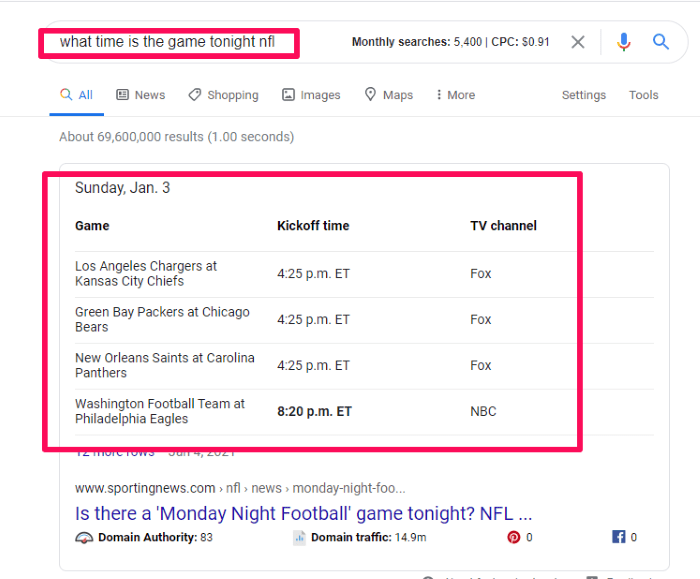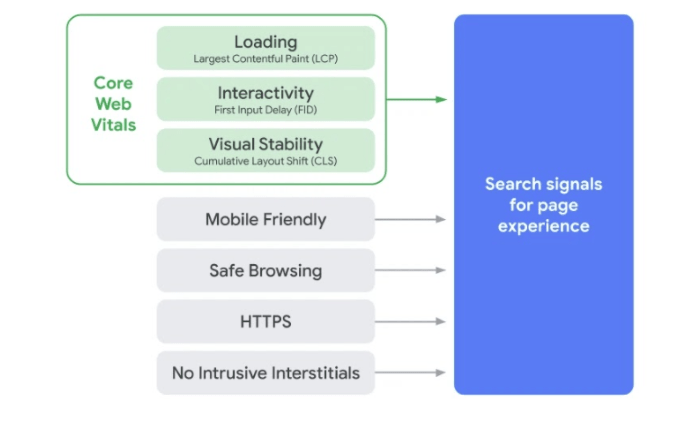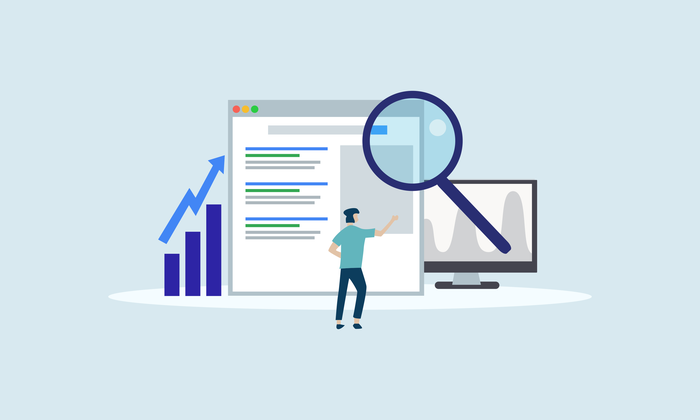
Google continually updates its SERPs (search engine results pages). With the constant addition of new features, like passage indexing and mobile-first indexing, the SERPs of 2021 look far different than they did just a year or two ago.
It makes sense—Google’s entire business model is based on providing users with the best possible experience.
For marketers, though, it can be frustrating. Every year there are dozens of updates, new features, and updated strategies.
How do you keep up? Preparation is the key to search engine success.
Here’s what you need to know about SERPs in 2021.
SERP Result Trends in 2021
According to Moz, Google updates its algorithm thousands of times a year. Most of the changes are small adjustments with no significant impact. However, you can expect at least a few of those updates to cause major SERP changes.
What SERP result trends should you pay attention to for 2021 and beyond? Let’s look at the most important SERP trends and what it means for digital marketing.
Focus Less on Metadata and More on User Intent
Are meta descriptions and titles dying?
Not quite, but optimizing the metadata to draw users in may not be as crucial as it used to be. There are several shifts digital marketers should pay attention to, like the increased importance of user intent.
User intent means understanding what motivates users to perform a search or click a button. As Google relies more on AI to understand what users want, SERPs depend less on small optimizations, like metadata, and more on whether search results actually meet a user’s search intent.
Google has been actively catering to user intent for years, with updates like the local 3-pack and zero-click searches.
Recent updates, like BERT, RankBrain, and voice search, indicate user intent is a cornerstone of SEO in 2021 and beyond.
What does that mean for SEO? Here are a few ways to optimize for user intent:
- Answer common questions about your topic to snag Google answer boxes.
- Track how prospects move through your marketing or sales funnel to better understand which searches lead to conversions.
- Watch dwell time, not just bounce rate. Dwell time measures how long a user looks at a page after they click. A longer dwell time indicates your page is useful.
- Pay attention to intent, not just keywords. Keywords can have multiple intents, so create content that meets multiple types of intent. For example, if someone searches “worm composting,” they might be wondering where to buy supplies, how to do it, or what types of food worms can compost. Use long-tail keywords to optimize for all kinds of intent.
User intent will likely increase in importance in the coming years, so expect more SERP features from Google aimed at giving users what they want.
Focus Less on Keyword Search Volume and More on Behavioral Analytics
Keyword search volume is the average number of times users search for a particular word. For many years, SEOs and PPCs used this metric to determine whether a specific term was worth targeting.
Why bother spending money creating content or ads for a keyword that no one looks up, right?
It makes sense, but the SEO landscape is far more complex than it was in the days of keyword stuffing.
Here’s the thing: If you are targeting a keyword, there’s a good chance everyone else is, too, which makes it incredibly difficult to rank for competitive keywords like “buy Nike shoes.”
What’s the alternative? Use behavioral analytics to better understand why users search for specific search terms and use that data to create a funnel.
Here are a few examples of behavioral analytics you can find right in Google Analytics:
- Acquisition Data: Tells you where users came from, such as organic search, direct, referral, social, etc. This lets you know what channels are driving users to your site.
- Behavioral Flow Report: Helps you understand the path users take on your site. You can learn how to set up the report here.
- Track Goals: Measures how well your website supports your overall marketing objectives. For example, does content promoting a new product actually result in sales? Here’s more about goals, including how to set them up if you aren’t familiar with the process.
Google Analytics isn’t the only way to get access to behavioral analytics. Tools like Mixpanel and Smartlook provide additional behavioral analytics reports like heat maps and visitor recordings.
Keep Natural Language Processing in Mind
Google is getting smarter.
Rather than just looking at the words searchers use, the search engine uses natural language processing to better understand exactly what users are looking for (which is another feature pointing to a greater focus on user experience!).
Natural language processing is a division of artificial intelligence that focuses on allowing computer programs to process and understand human language naturally.
For example, if you search for “what time is the game tonight NFL,” Google shows a chart of games for this coming Sunday because it realizes there aren’t any NFL games the night you’re searching for.

Once again, Google is focusing more on user intent and less on traditional optimization strategies.
Brands and digital marketers should focus on long-tail keywords and pay attention to user intent and detailed, long-form content.
Leveraging Core Web Vitals
Core web vitals are three specific factors Google considers crucial to the overall user experience. They include loading, interactivity, and visual stability.

Google also announced page experience in ranking signals would roll out in May 2021. This update combines core website vitals and features like mobile-friendliness to create page experience signals.
Here’s what the three types of core website vitals mean:
- Loading: How long does a page take to load and display elements important to the user?
- Interactivity (first input delay): The length of the delay between a user taking action (such as filling out a form) and the website beginning to process the interaction.
- Visual stability: How often does the layout of a page change? For example, if a user goes to click on a link, does the website load and cause the page to jump to another area?
You can view core web vitals in Google Search Console under “Enhancements.”

Improving core web vitals can impact your ranking, so how do you do it?
Work to streamline website code, reduce JavaScript execution time, and remove anything unnecessary from your website, including plugins you don’t really need.
Google will soon consider page experience more than ever before. This means site owners should focus less on traditional optimization techniques and more on user experience.
Continue to Focus on Mobile Experience
Google hasn’t been shy about the importance of mobile. Google moved to mobile-first indexing for the entire web, meaning crawlers look at mobile versions of websites first.
It’s easy to see why: Mobile traffic now makes up more than half of all internet traffic.
If you aren’t focused on the mobile experience, your site will probably struggle to rank.
Here are a few tips to improve the mobile experience:
- Use responsive design to ensure your site works well on devices of all sizes.
- Reduce heavy code to speed up site load times on mobile devices.
- Ensure images and content are easy to view, even on smaller screens.
- Reduce (or eliminate) the use of interstitials like pop-up ads.
- Use larger buttons that are easier to tap on mobile devices.
- Use autofill forms so users can easily complete tasks like signing up for an email list or filling out a contact form.
Mobile is here to stay. It’s no longer just a nice-to-have feature. The good news is, you can use Google’s mobile-friendly testing tool to see exactly where you stand.
Focus on More Automation of Tasks
With tech advances and AI, there are more tools than ever to help automate certain tasks so you have more time to focus on ensuring your website is user-friendly and creating long-form content.
Here are a few marketing automation tools to consider:
- SE Ranking: This tool automates standard SEO tasks like backlink and ranking monitoring, competitor analysis, and website analysis.
- Pardot: This sales tool helps you manage lead nurturing, email marketing, and lead scoring.
- YourAmigo: This tool automates finding long-tail keywords to target.
Remember, marketing automation isn’t about automating SEO as a whole; it’s about giving digital marketers more time to focus on strategic tasks that can drive your site up in the SERPs.
How Passage Indexing Will be Used
Passage indexing is a new method Google is using to index content. Rather than only indexing pages as a whole, it can pull in a section from a longer page that may not directly be about the search query but is related to the content users are searching for.
Let’s say you wrote a long, detailed post about Facebook marketing. You cover how to optimize your profile, how to optimize Facebook ads, what types of content to share, and which tools users can use to schedule posts.
If a user searches “how to schedule posts on Facebook,” your post might not show up because it’s optimized for Facebook marketing as a whole.
Using passage indexing, Google looks at passages of content to determine if sections of a longer post meet the user’s intent, and it delivers those in the search results.
By better understanding the relevancy of specific passages, not just the overall page, we can find that needle-in-a-haystack information you’re looking for. This technology will improve 7 percent of search queries across all languages as we roll it out globally.
How will passage indexing impact SERPs in 2021 and beyond? Like several of the other updates, Google will spend less time looking for perfectly optimized content and more time looking for content that users find helpful.
Digital marketers should focus on long-tail keywords and providing valuable content for users, rather than focusing solely on what they think Google wants.
Changes to SERP Layouts and Functionality
Google’s SERP layout has changed drastically in the last few years. Features like Google Answer Boxes, local 3-pack, and People Also Ask help users find the information they need faster than ever.
What might the future bring?
We know it will bring more features to the SERPs. A study by seoClarity found more than 1200 unique search features in Google search results: an increase of more than 400 features from the year before!
While no one has a crystal ball, a few things are on the horizon:
- More zero-click answers: Google aims to give users the information they want as fast as possible. Additional searches are likely to deliver those answers right in the search results, rather than requiring users to click.
- Local listings will play a larger role in SERPs: As Google better understands users’ search intent, it will likely deliver local results far more often. A Google My Business page is crucial, both now and in the future.
- Virtual reality and augmented reality may show up in Google searches: Video usage has been rising for several years. Video, virtual reality, and augmented reality are likely to increase in SERPs in the future.
Conclusion
Google is doubling down on putting users first. Marketers should do the same.
Updates like page experience signals and passage indexing show Google is transitioning away from traditional best practices, like writing meta descriptions for every page, and focusing more on understanding user intent.
The future of SERPs will likely be driven by data, AI, and a deeper understanding of the user. Is your brand ready? Find out how our digital marketing experts can help prepare you for the future of SEO.
What do you think the SERPs will look like in 2021 and beyond? Share your predictions in the comments.
The post What the SERPs Will Look Like in 2021? appeared first on Neil Patel.
The post What the SERPs Will Look Like in 2021? appeared first on Local SEO Resources.
